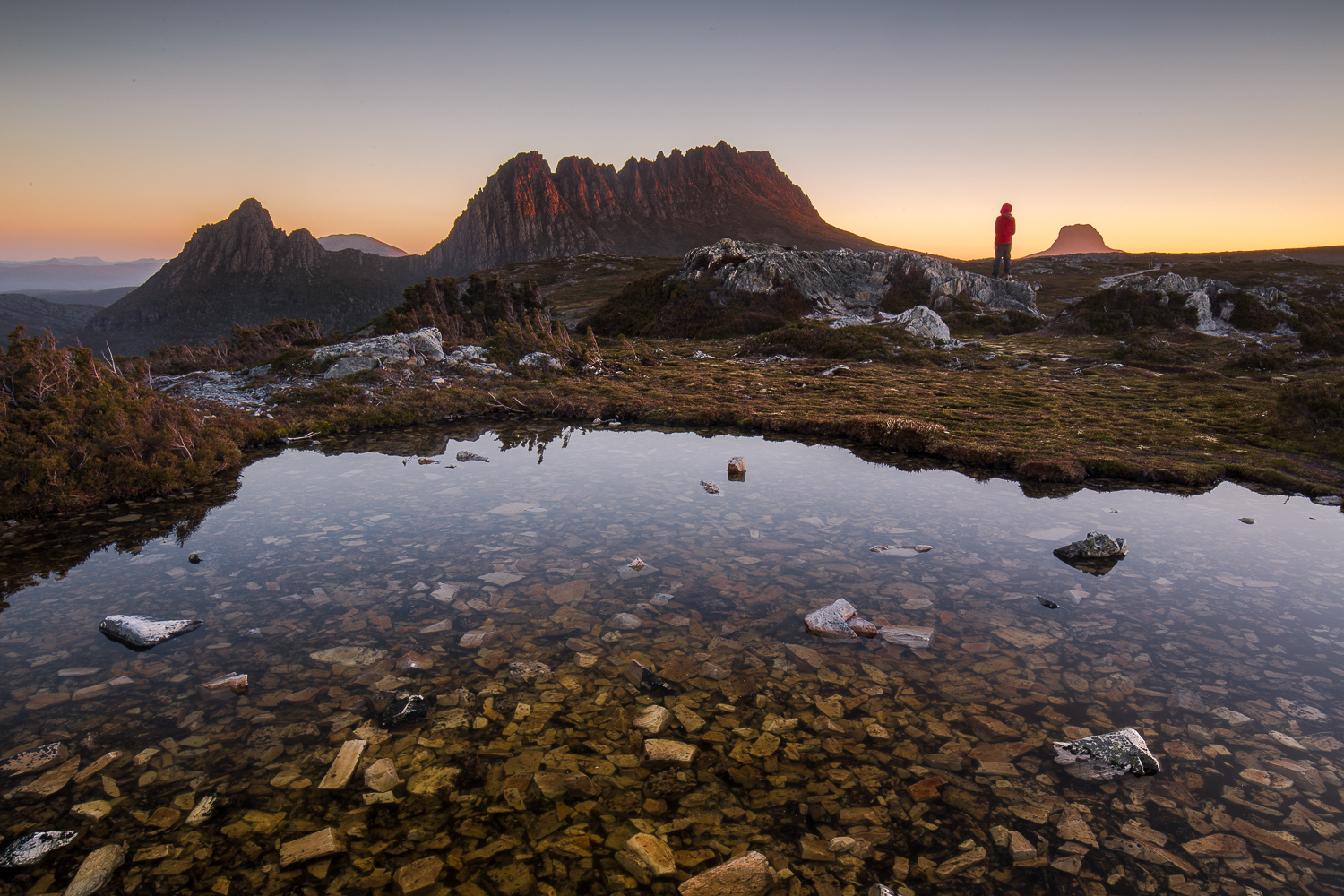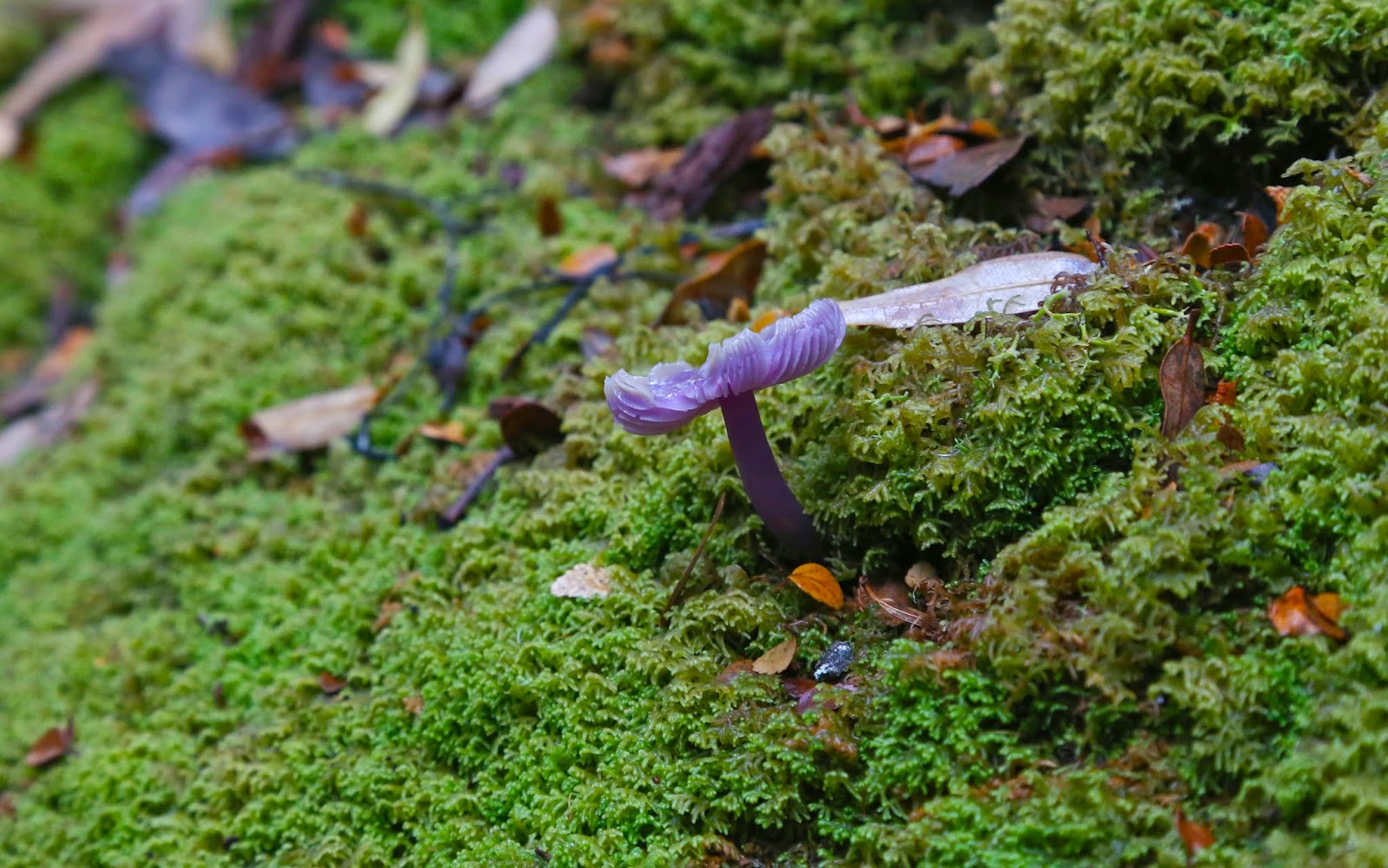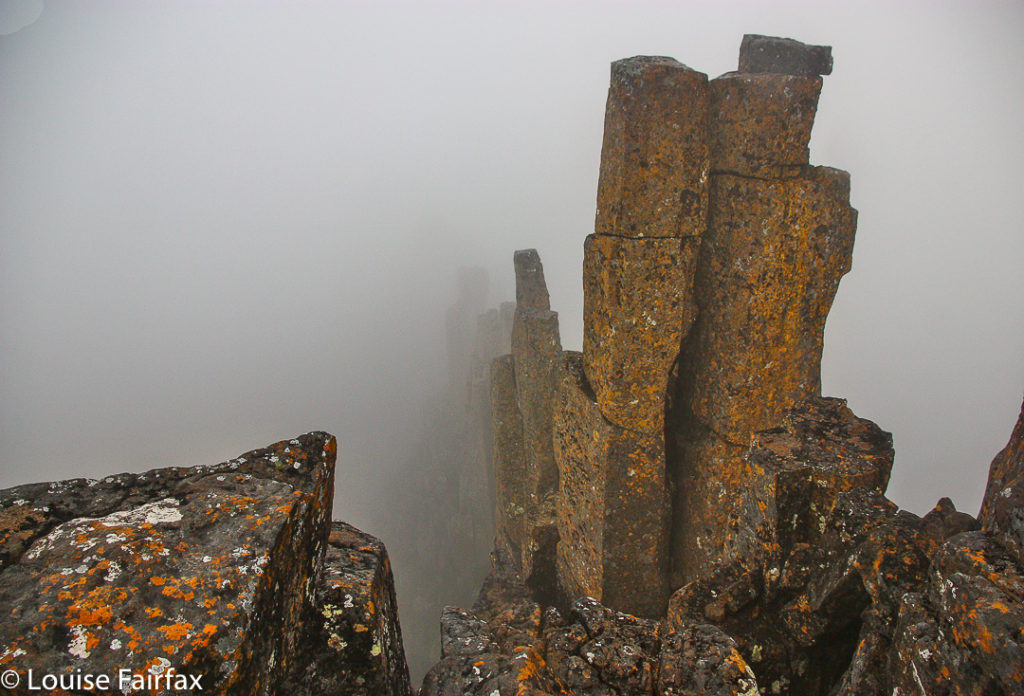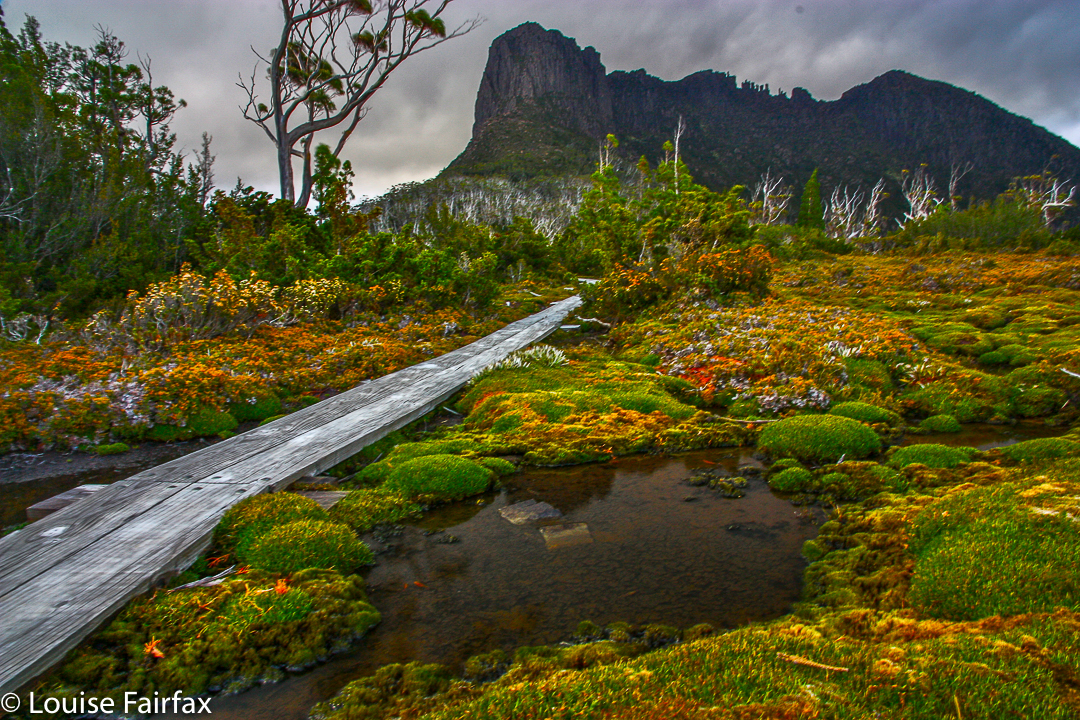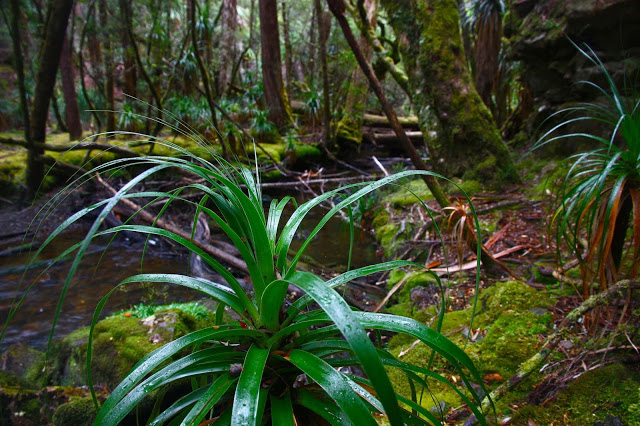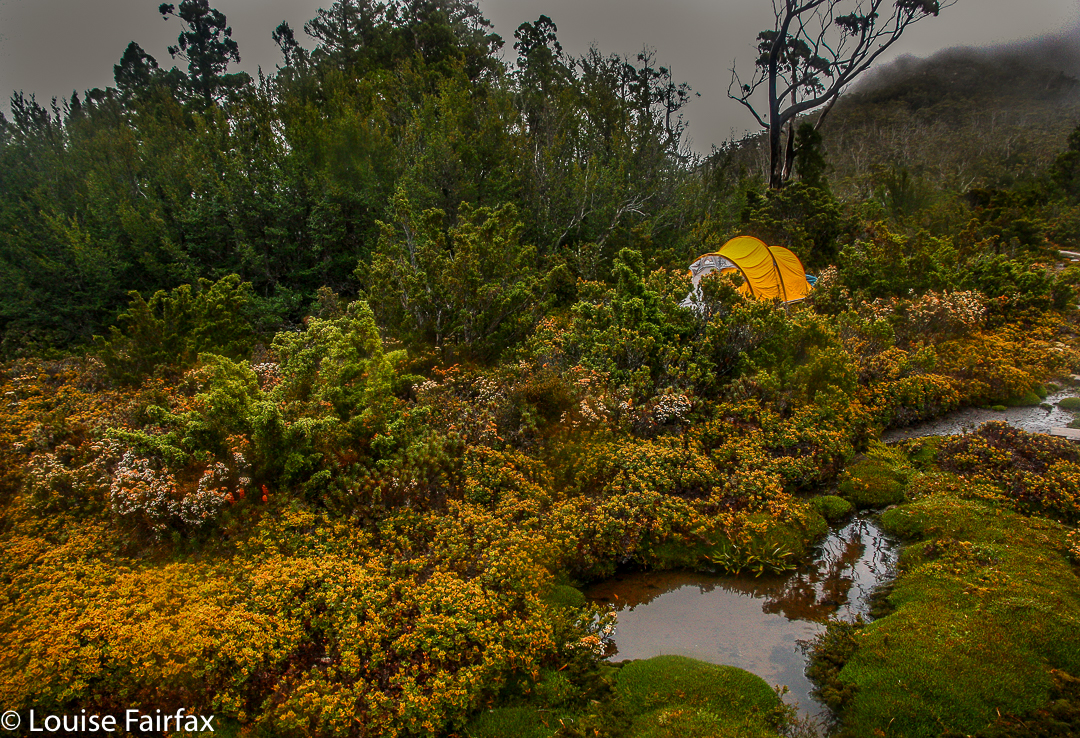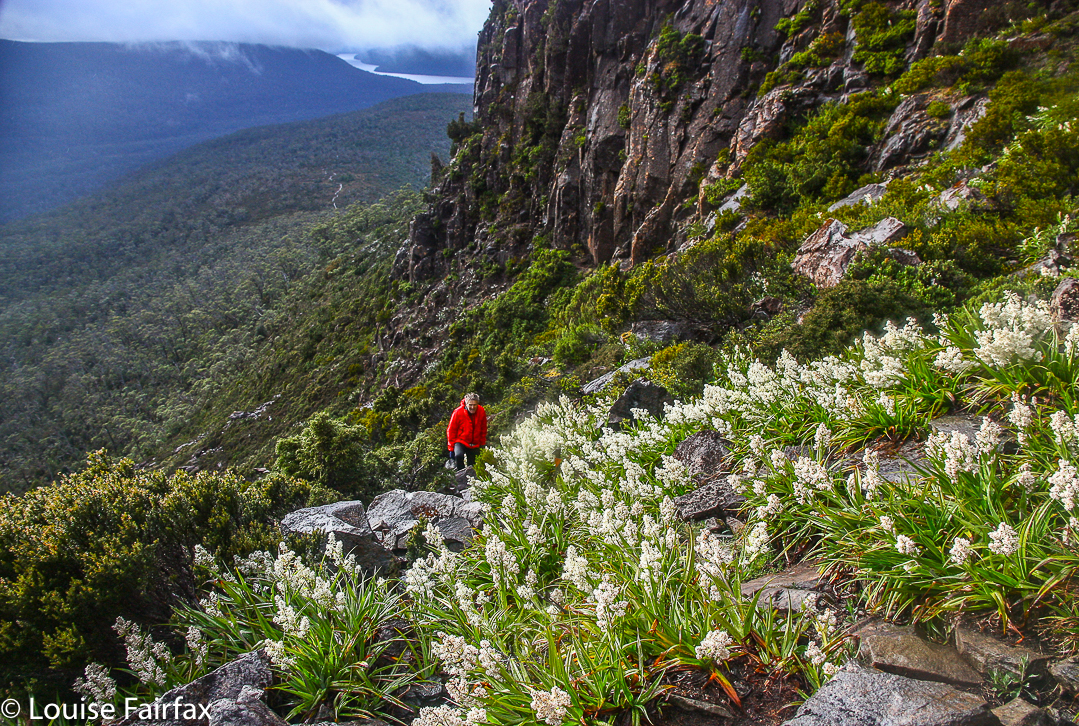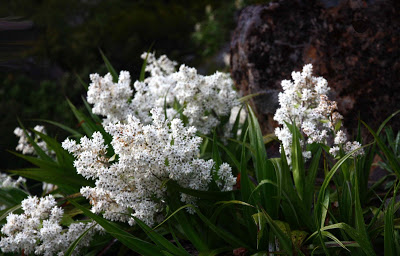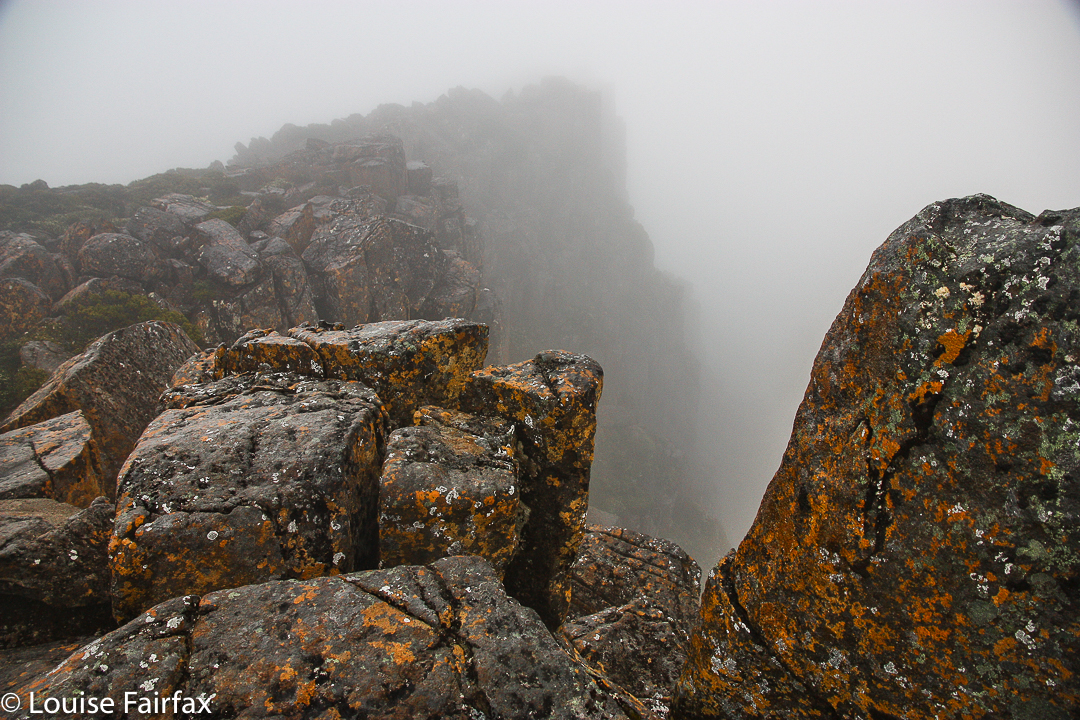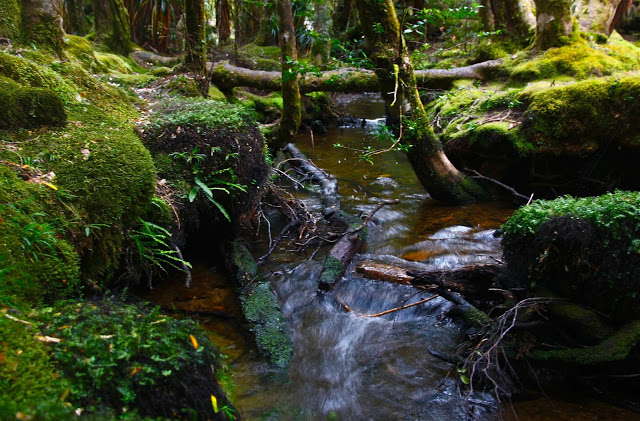Fungi fest at Lake St Clair Apr 2014.
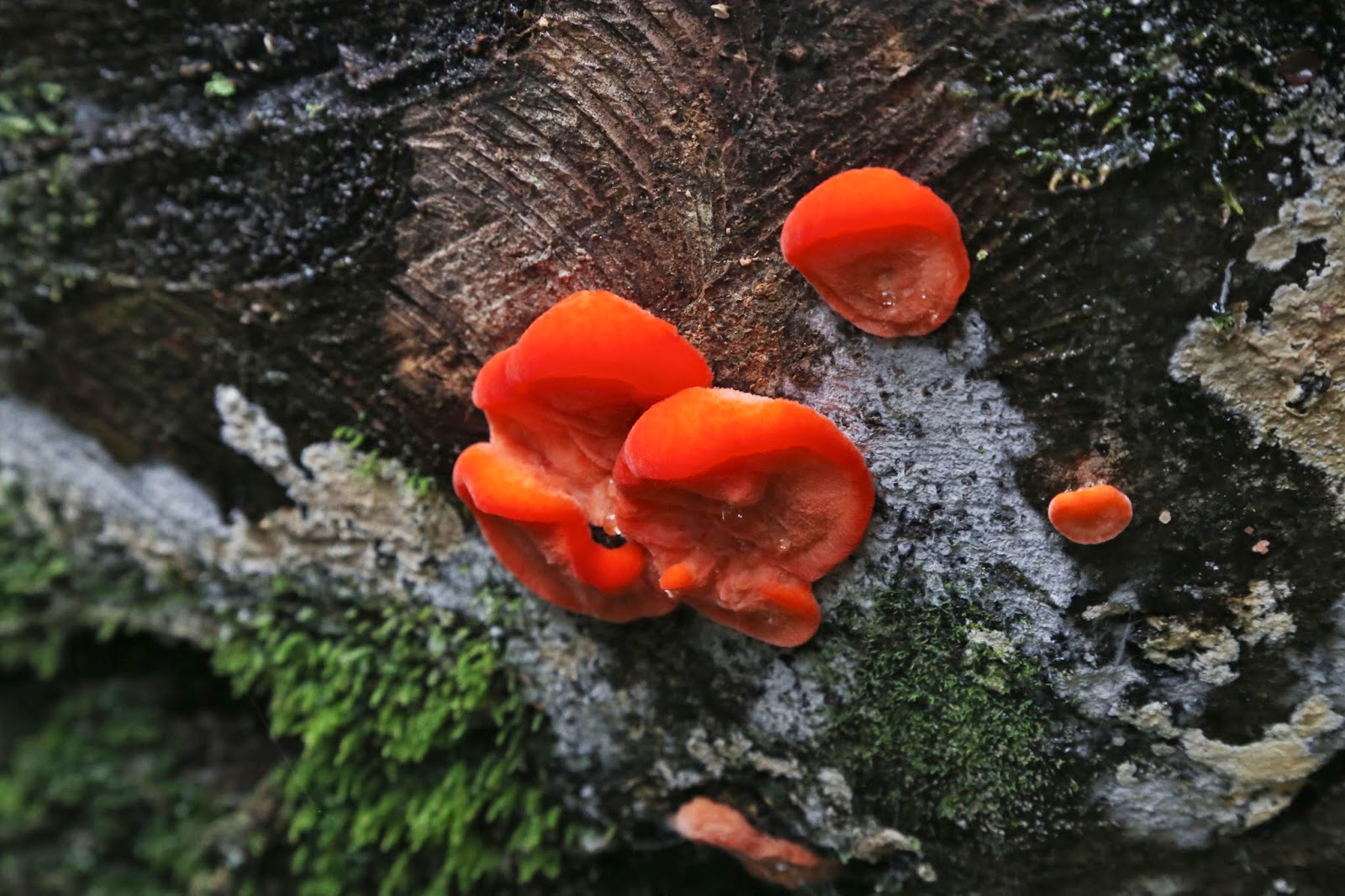 Who can resist the flame red of aurantiporus pulcherrimus, seen here by the shores of Lake St Clair?
Who can resist the flame red of aurantiporus pulcherrimus, seen here by the shores of Lake St Clair?
It was snowing lightly on the central highlands as we drove towards our destination, our plan being to sleep on top of the glorious Mt Olympus. But this was not a peak bagging bushwalk: we wanted to see the view.
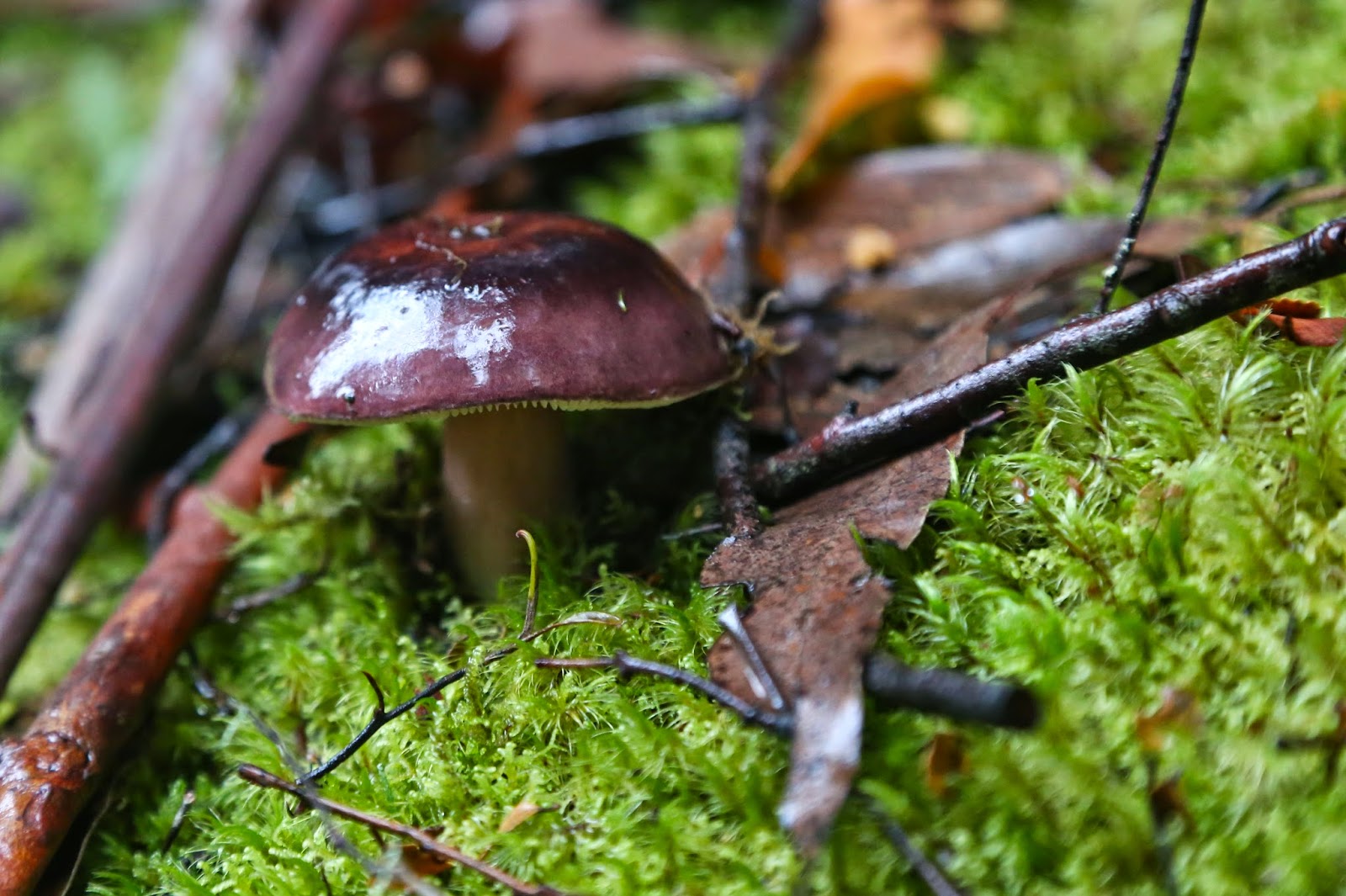 Cortinarius archeri
Cortinarius archeri
“Are we going up if it’s like this?” asks my husband, his voice not full of joy and hope.
“Let’s just wait and see. There’s still a half hour’s drive left,” I say by way of prevaricating.
We arrived. The mist swirled around us, but the snow had ceased. I went into the information office to check on the latest forecast and saw doom and gloom for the next five days. We even discussed giving up and going to Hobart, but both agreed that, having driven here, we would set out and see how the day progressed. What eventuated was a fungi fest. I had taken seven photos before the little nature trail sign number two had appeared. Hm. This was going to be a slow trip, but we were no longer in any kind of hurry, so why not linger longer and enjoy these colourful marvels, these hints of magic lands and fairies?
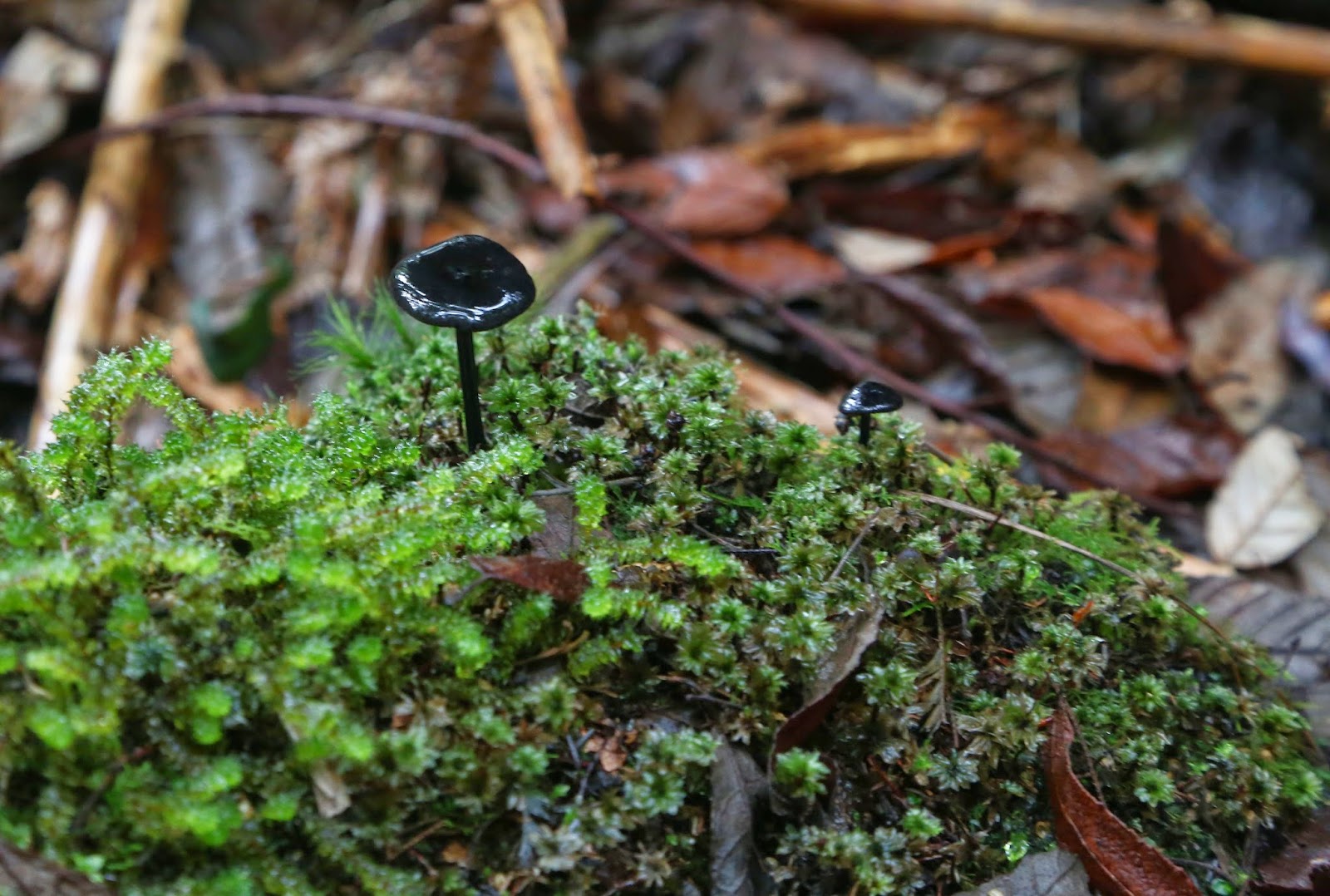 Entoloma sp I suspect. I couldn’t see underneath, and didn’t happen to bring a mirror.
Entoloma sp I suspect. I couldn’t see underneath, and didn’t happen to bring a mirror.
The score at the end of the day was over a hundred photos of fungi, and not a single leech bite, which is amazing if you consider that in order to take most of my photos, I lie in the mud, or at the very least, go down on my elbows and knees, paying homage to nature’s little miracle workers, noble housekeepers of the forest who facilitate the growth of the trees I love.
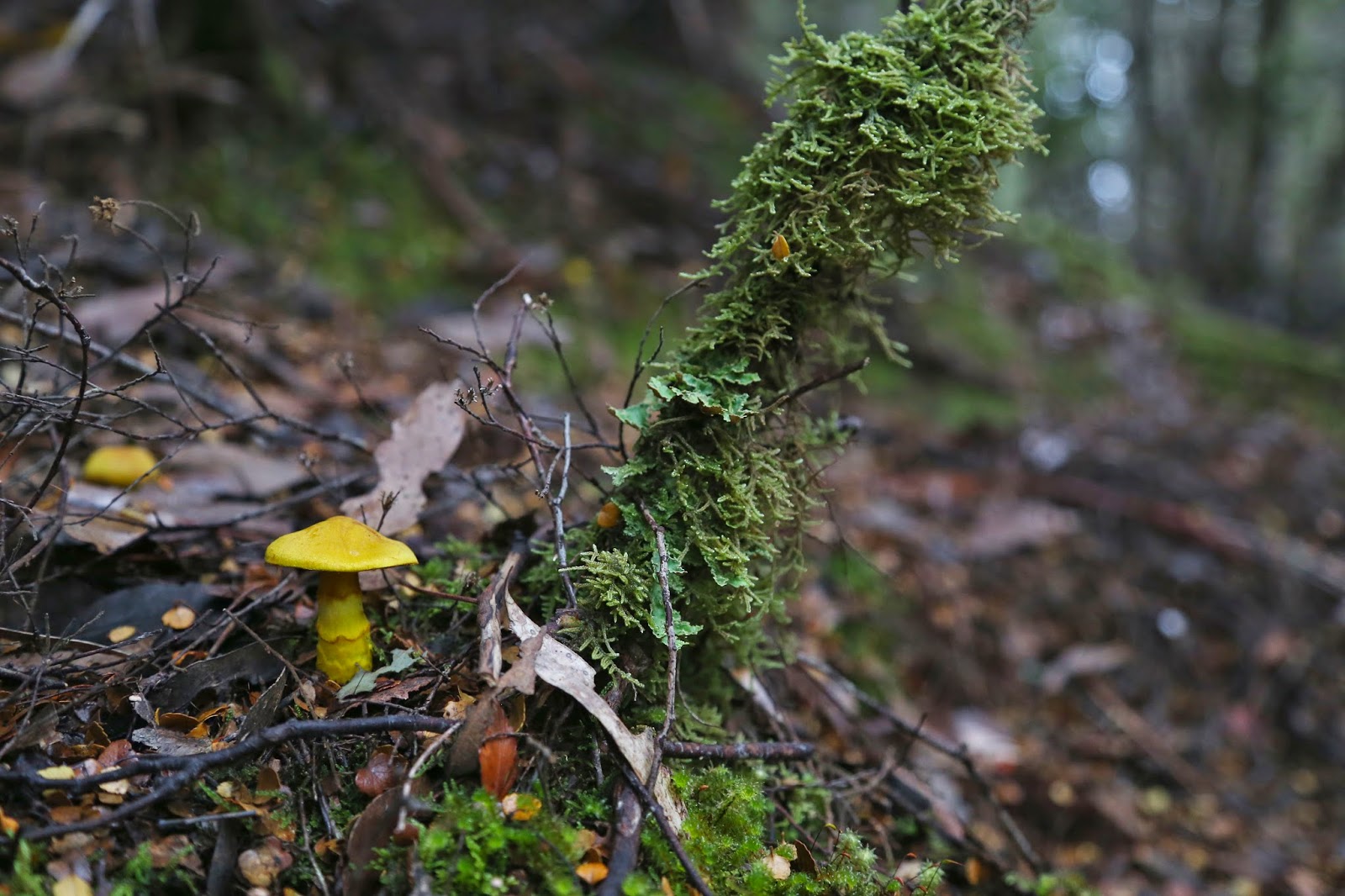 Dermocybe canaria
Dermocybe canaria
The photos I have chosen are ones that I hope act as visual-poetic images, a single moment intended to connote a much wider field of magnificence, a whole world of forest green and elemental wonder that fills me with joy. The larger field of forest context is there, but blurred usually, just a hint of the rich world that is the kingdom of the fungus, but also enabled by it.
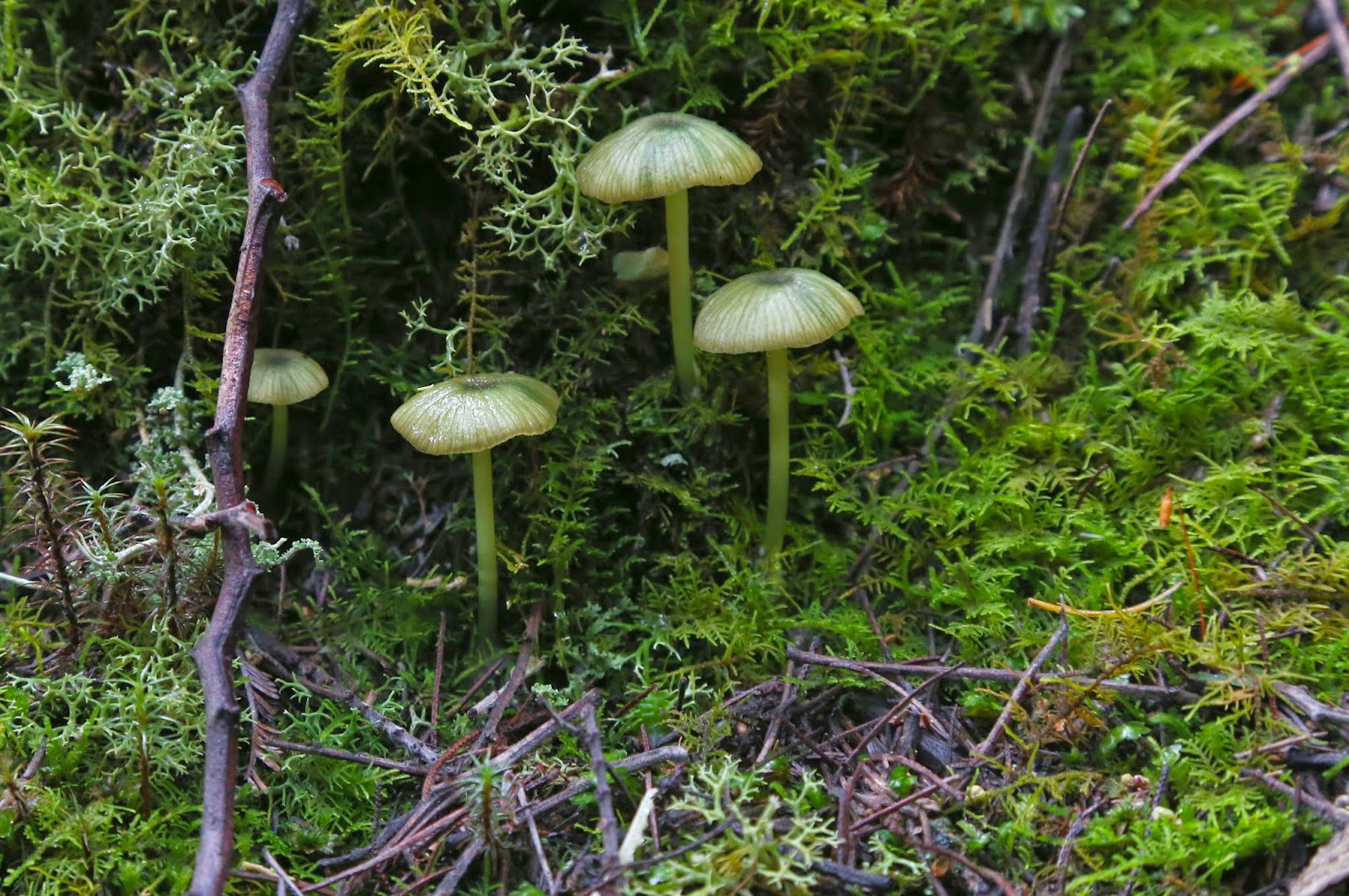 Entoloma rodwayi
Entoloma rodwayi
I had assumed that my association of fungi with primeval charm had been taught to me via connections of pictures of fungi with fairies in woods, and then via Tolkien, or Shakespeare’s comedy characters retreating to wonderful woodlands for their happy endings, by Faery Queens or Merlin’s wood (although I love the lot). However, last year I took my one-year-old grandson fungi hunting, and he knows none of these stories, and yet he warmed the hearts of many who watched him by delighting in the tiny forms, calling me with unabated glee each time he found a new species (for him, colour or type).
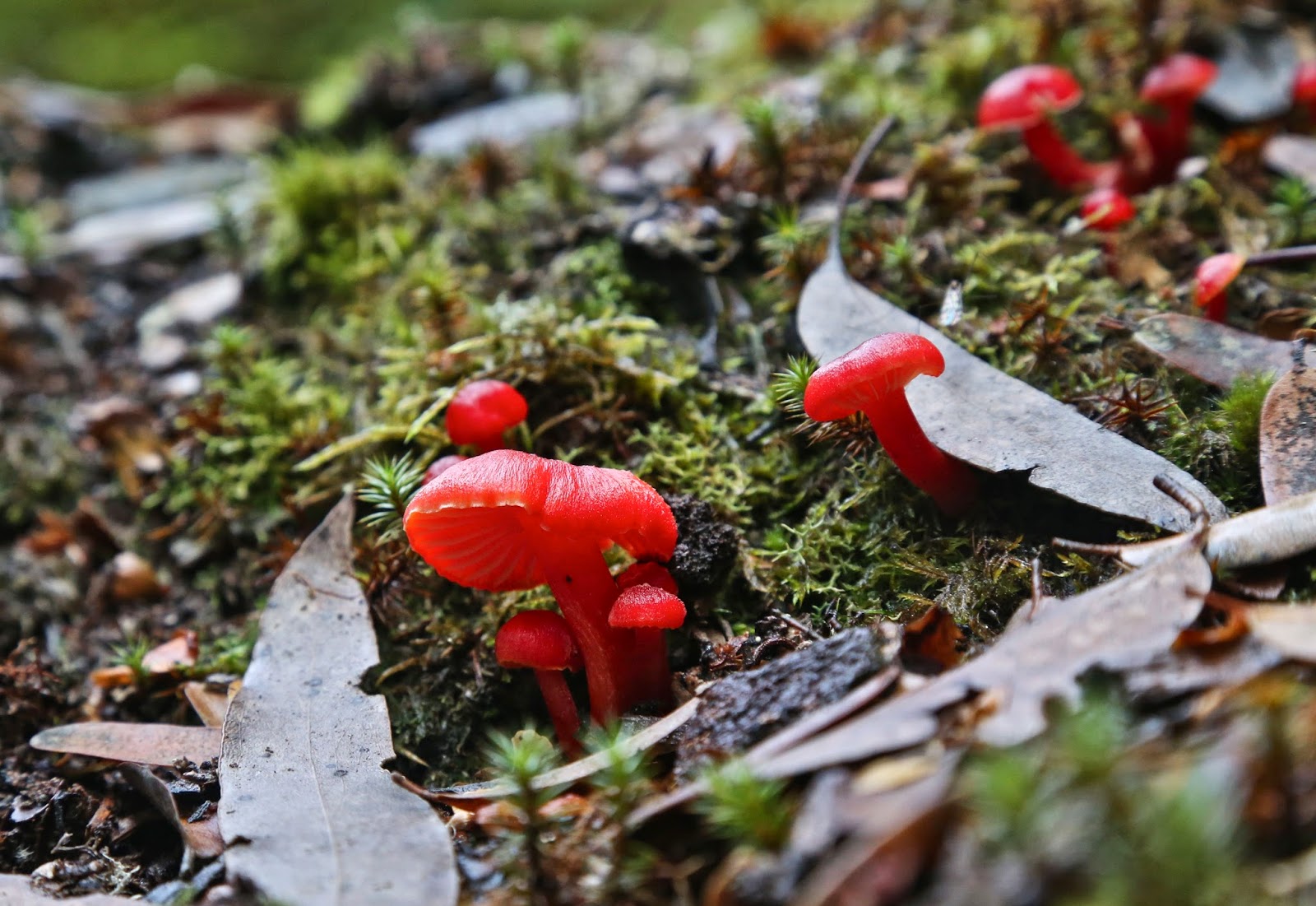 Hygrocybe firma
Hygrocybe firma
Fungi are essential to the life of forests as we know them. Without saprophytic fungi (or decomposers who live off dead or decaying matter), our forests would be unmanageable piles of non-decomposed logs and unbroken-down leaves, cluttering up the space needed for new trees. As it is, thanks to the work of these agents, the trapped carbon in lignin and cellulose (made when the plant was photosynthesising) can be returned to the soil for recycled use by the next forest dwellers. Because of this, I walked through the forest enjoying the debris of mossy logs and fallen branches and leaves from the sassafras, leatherwoods, King Billy Pines and myrtles, not for one moment wishing it were manicured or “tidied up”, as this very debris is the heart of the recycling process that is necessary for the forest’s health. In the book Wildwood, Roger Deakin bemoans the fact that in England many “wood-feeders” have been rendered locally extinct by being literally tidied out of existence (136).
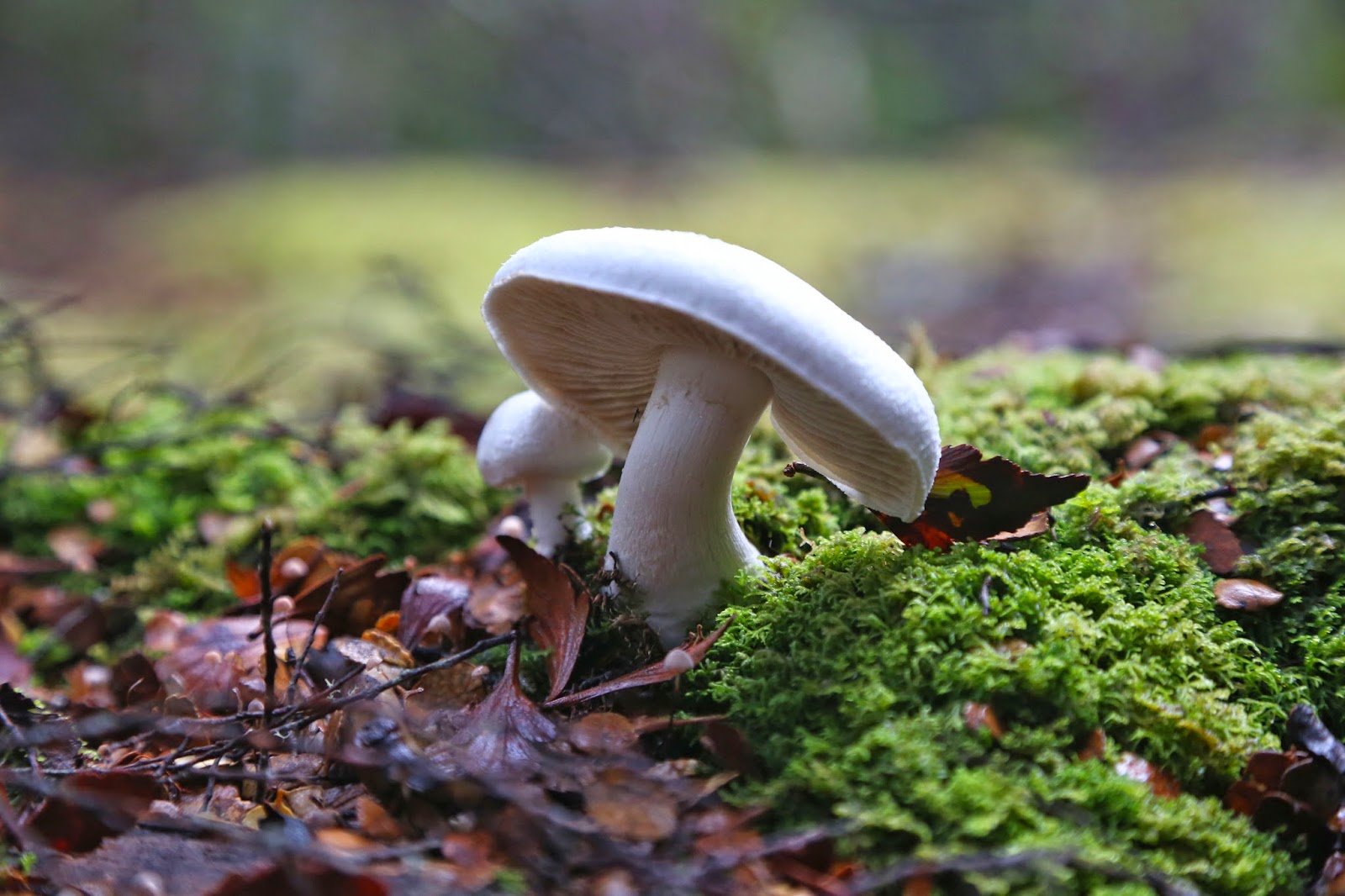 The other most helpful fungi are called mycorrhyzal fungi. These ones form associations with the trees’ roots – in which case they do a deal with the plant, making use of the sugars that the plant has made, whilst returning the favour by increasing the plant’s absorption of water and minerals. These fungi have also been found to be beneficial in aiding some plants’ resistance to certain diseases, and in helping plants to overcome poor or contaminated soils. Whilst the saprophytic fungi might be called the housekeepers of the forest, these (mycorrhyzal) ones might perhaps be called the chefs, nurses and doctors. Whichever the type I am looking at while I walk, I don’t see them without also taking into account their essential role, even if I don’t put it into words at that moment. Knowing it is like being told the wonderful ingredients of the meal you’re about to eat in a restaurant: it makes it all the more delicious.
The other most helpful fungi are called mycorrhyzal fungi. These ones form associations with the trees’ roots – in which case they do a deal with the plant, making use of the sugars that the plant has made, whilst returning the favour by increasing the plant’s absorption of water and minerals. These fungi have also been found to be beneficial in aiding some plants’ resistance to certain diseases, and in helping plants to overcome poor or contaminated soils. Whilst the saprophytic fungi might be called the housekeepers of the forest, these (mycorrhyzal) ones might perhaps be called the chefs, nurses and doctors. Whichever the type I am looking at while I walk, I don’t see them without also taking into account their essential role, even if I don’t put it into words at that moment. Knowing it is like being told the wonderful ingredients of the meal you’re about to eat in a restaurant: it makes it all the more delicious.
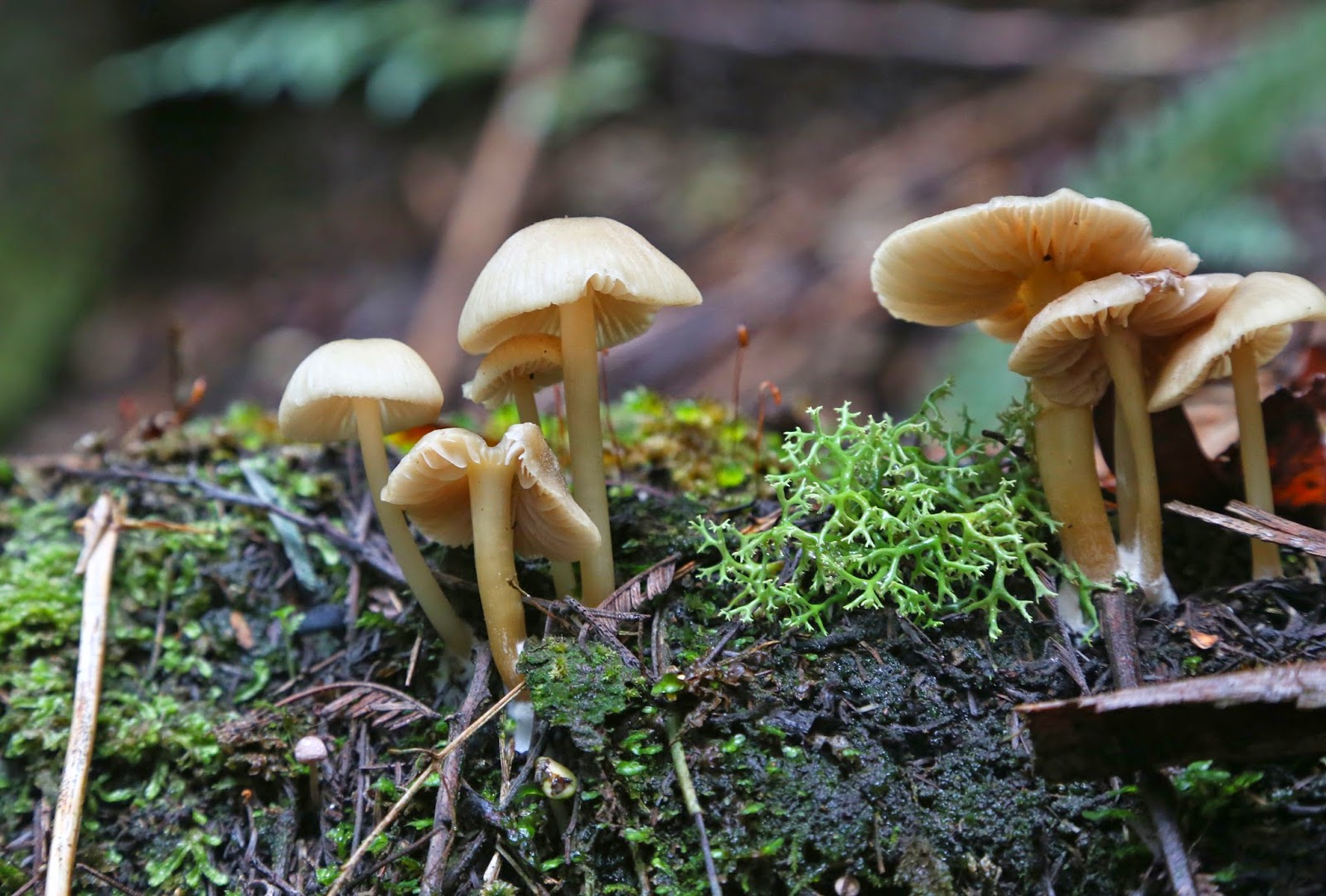 This account of the benefits of fungi has entirely omitted the other reason that I love them, which is because they are supremely beautiful – that is, the ones I love are. The ones that enthral me most are the tiny, ethereal ones, with fairy caps and stipes as narrow as a spider’s web – the ones that connote enchanted woods and a world of limitless beauty, or the ones that are so viscous they almost glow.
This account of the benefits of fungi has entirely omitted the other reason that I love them, which is because they are supremely beautiful – that is, the ones I love are. The ones that enthral me most are the tiny, ethereal ones, with fairy caps and stipes as narrow as a spider’s web – the ones that connote enchanted woods and a world of limitless beauty, or the ones that are so viscous they almost glow.
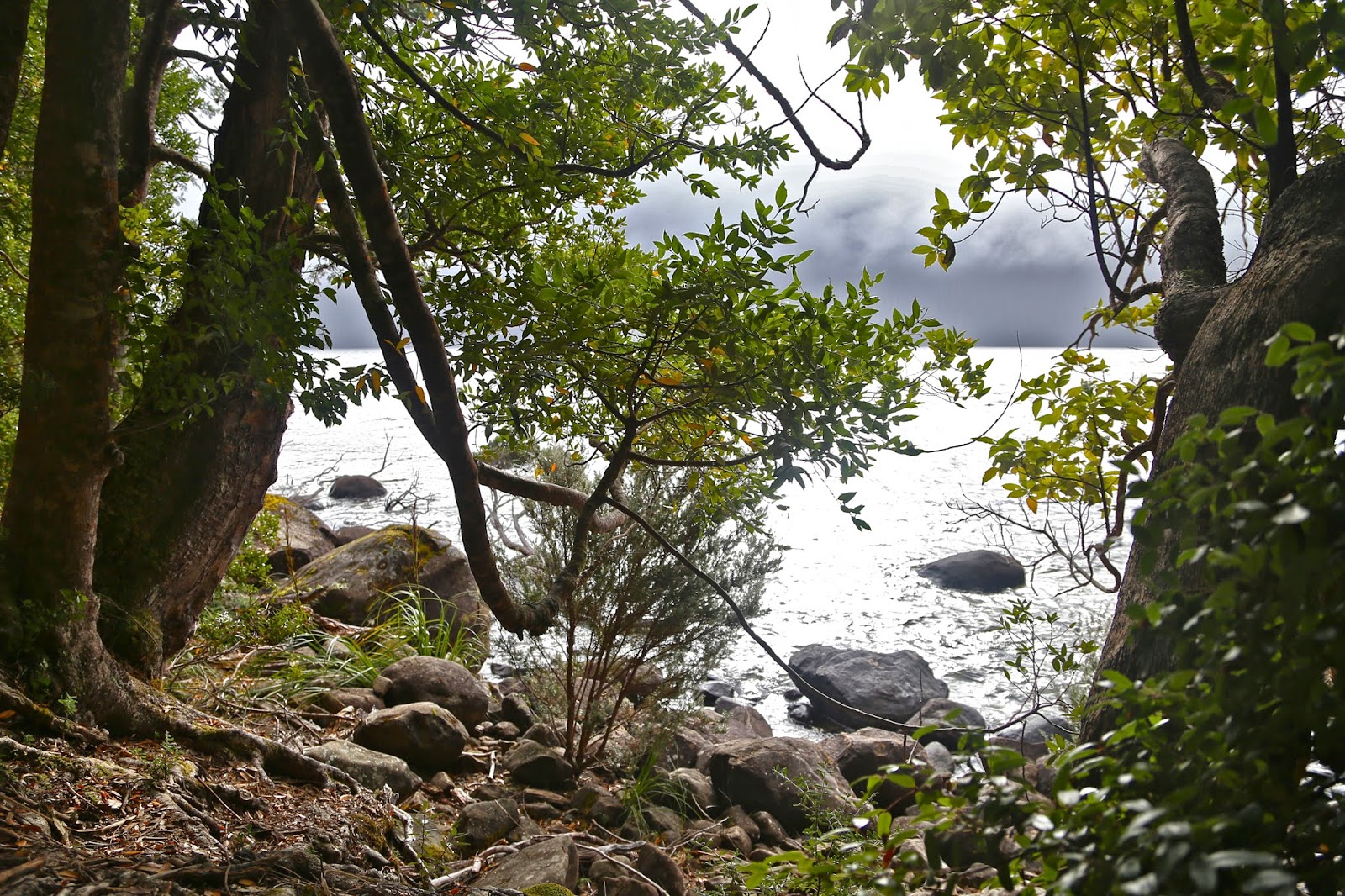 Lake St Clair, the backdrop to this fungi fest
Lake St Clair, the backdrop to this fungi fest
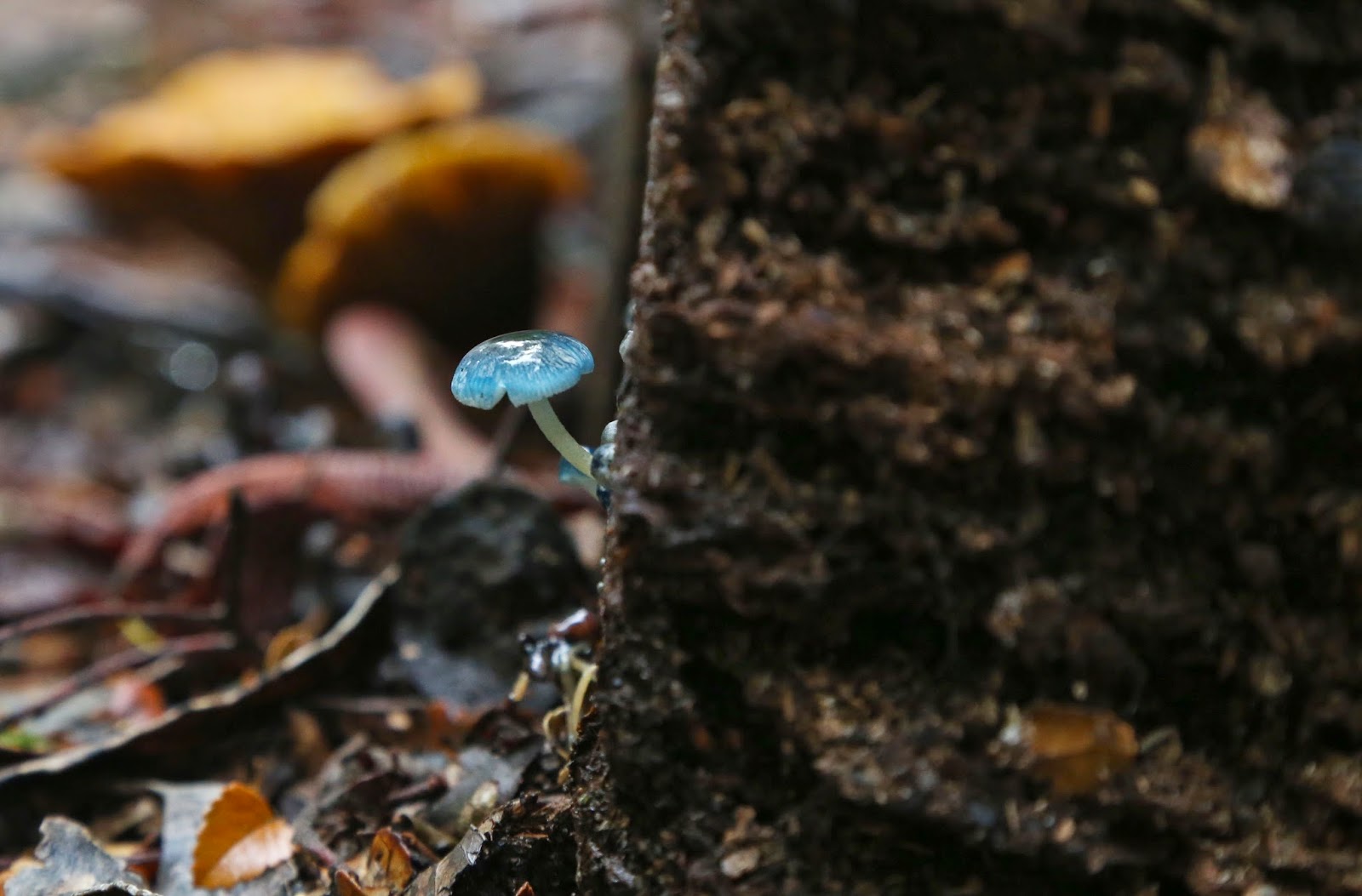 Mycena interrupta – that one’s a give away. The web informs me it’s known as the pixie’s parasol. It seems that association of fungi with the little people of the forest crosses all national boundaries.
Mycena interrupta – that one’s a give away. The web informs me it’s known as the pixie’s parasol. It seems that association of fungi with the little people of the forest crosses all national boundaries.
So, on we went fungi hunting and photographing until we reached Echo Point Hut, where we dumped our packs with the tent and food for an excursion that was no longer taking place, and went on further, doing a recce up the slopes of Mt Olympus for the next time that we would be there to do the climb properly. It was lovely to spend time at this hut right by the water, set in forest that is so lush, with the sound of running water ever present. Nice just to be, and not to be passing through for once.
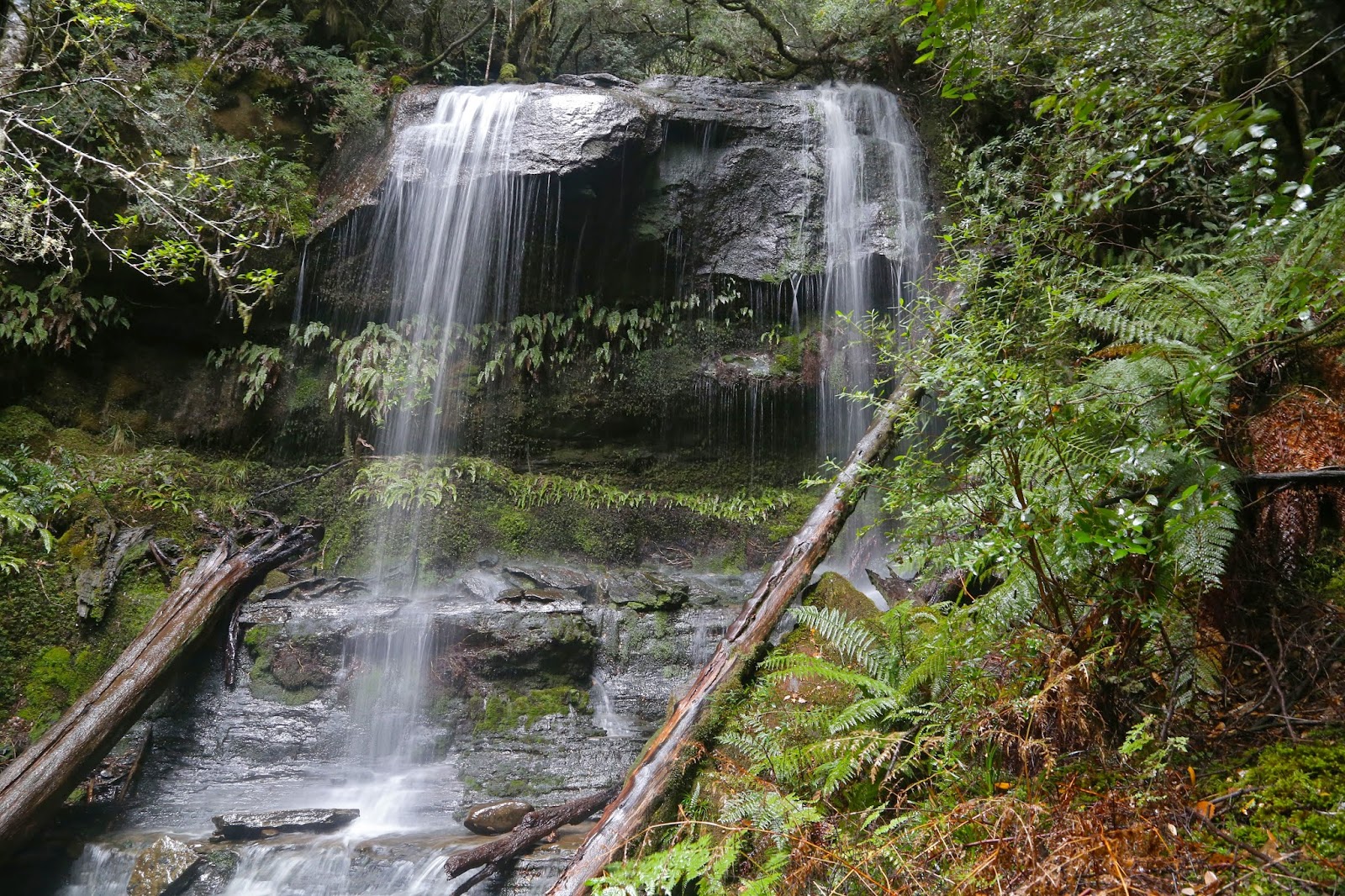 A waterfall we found whilst wandering around the untracked slopes on the flanks of Olympus
A waterfall we found whilst wandering around the untracked slopes on the flanks of Olympus
Note American readers: I hear many Americans calling fungi “mushrooms”, but in Australia this appellation is usually reserved for, say, the champignons (Agaricus bisporus) that go in Beef Stroganoff, so to call a poisonous fungus a mushroom could be quite dangerous in the wrong context. Besides, fungus is the scientific name for what we’re talking about, and so removes all ambiguity.
